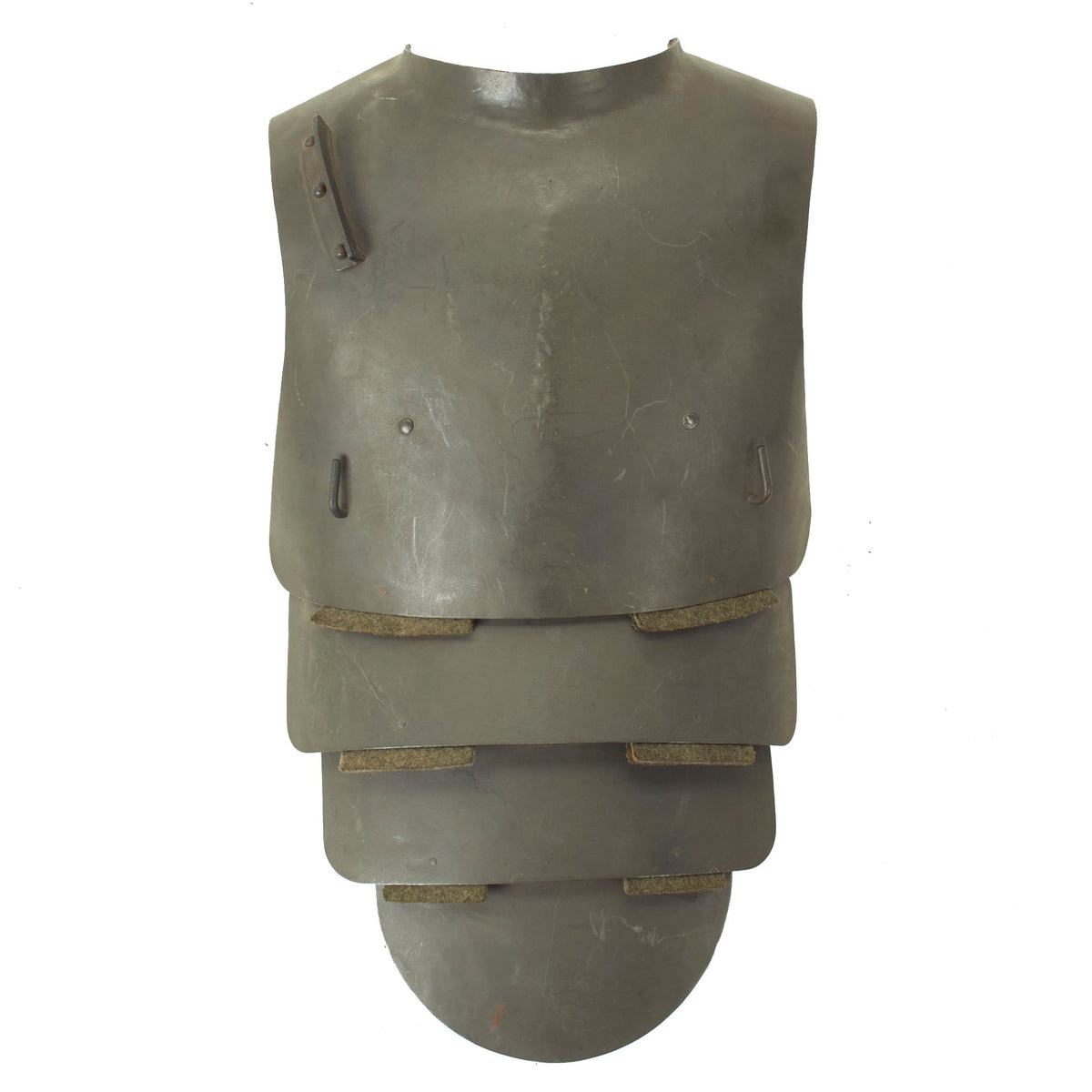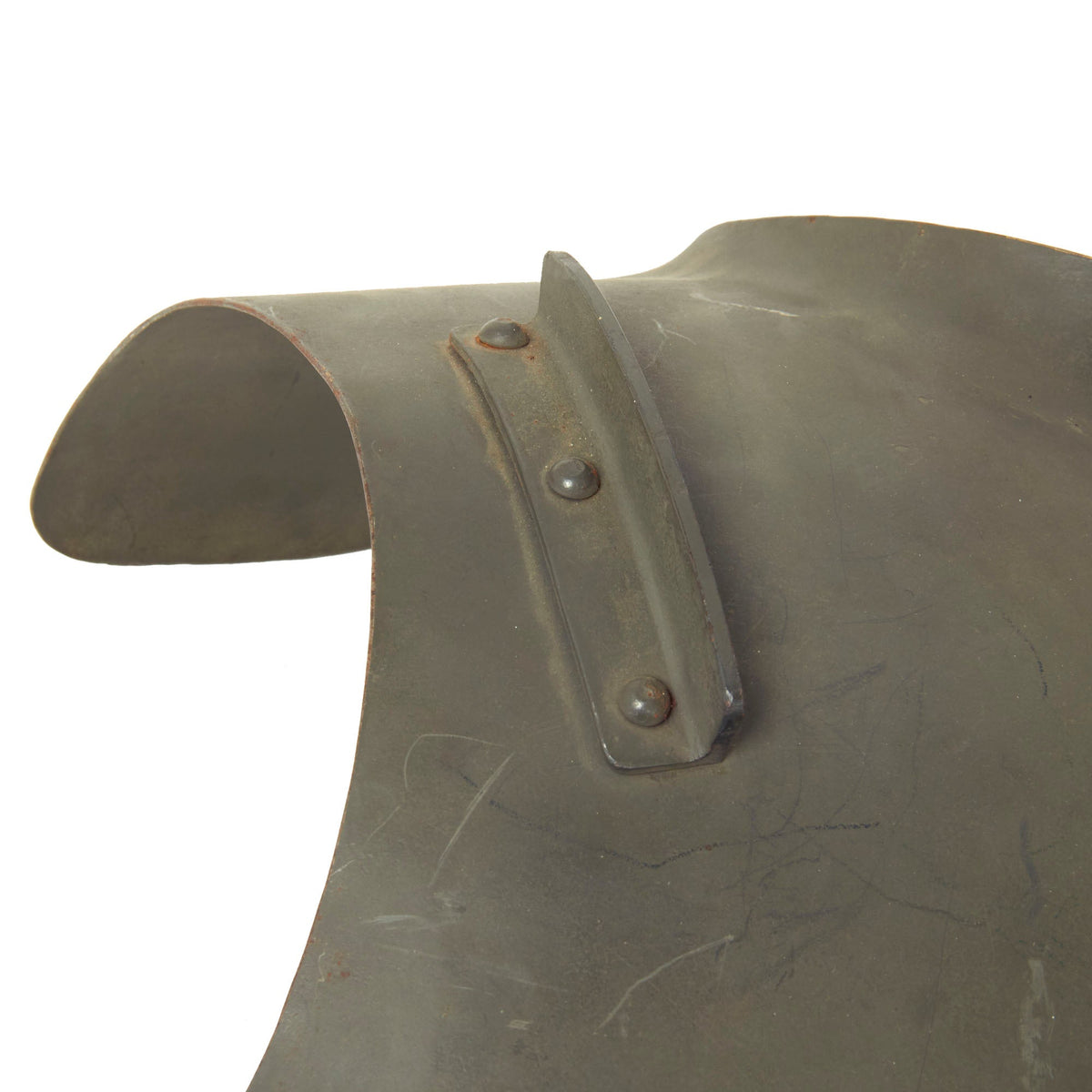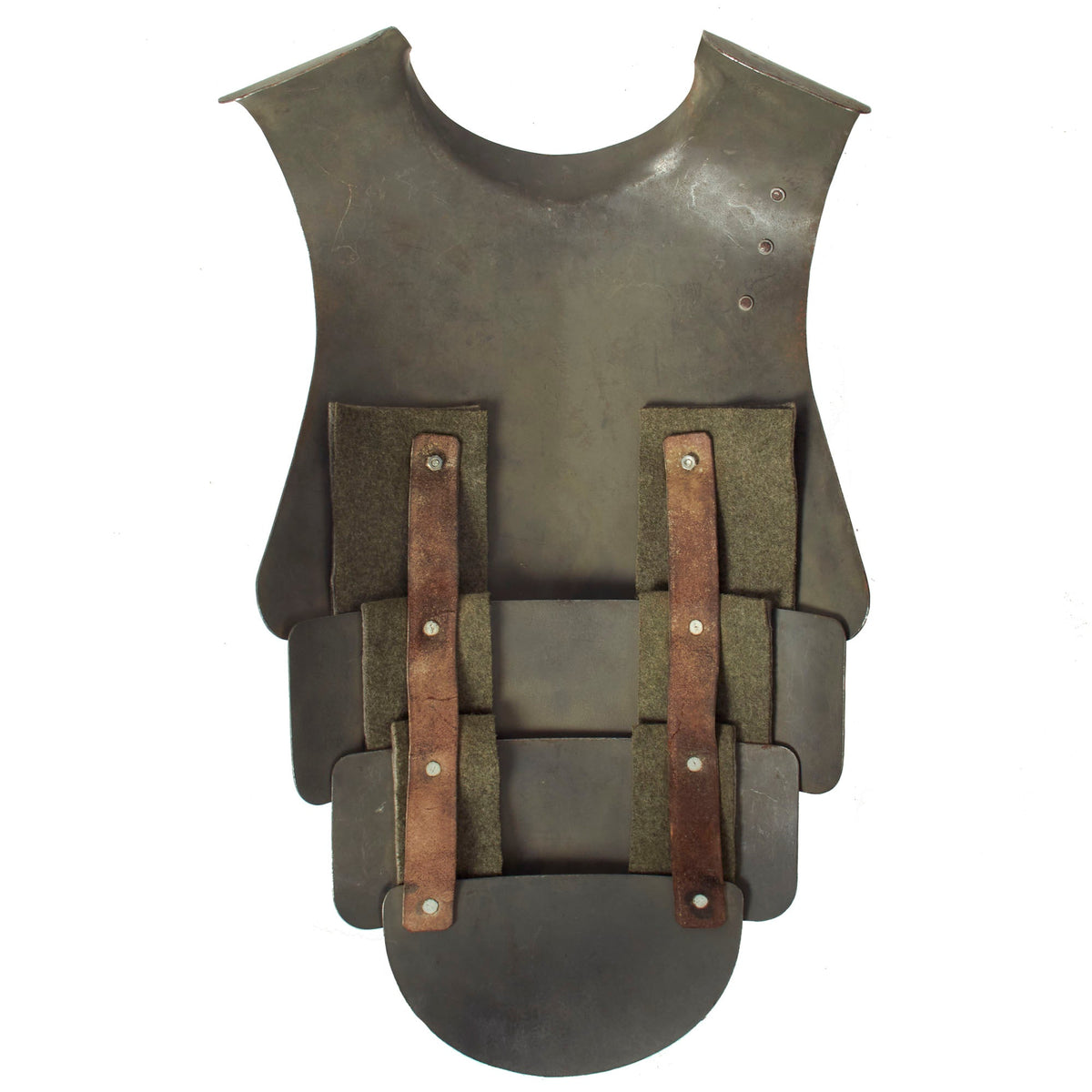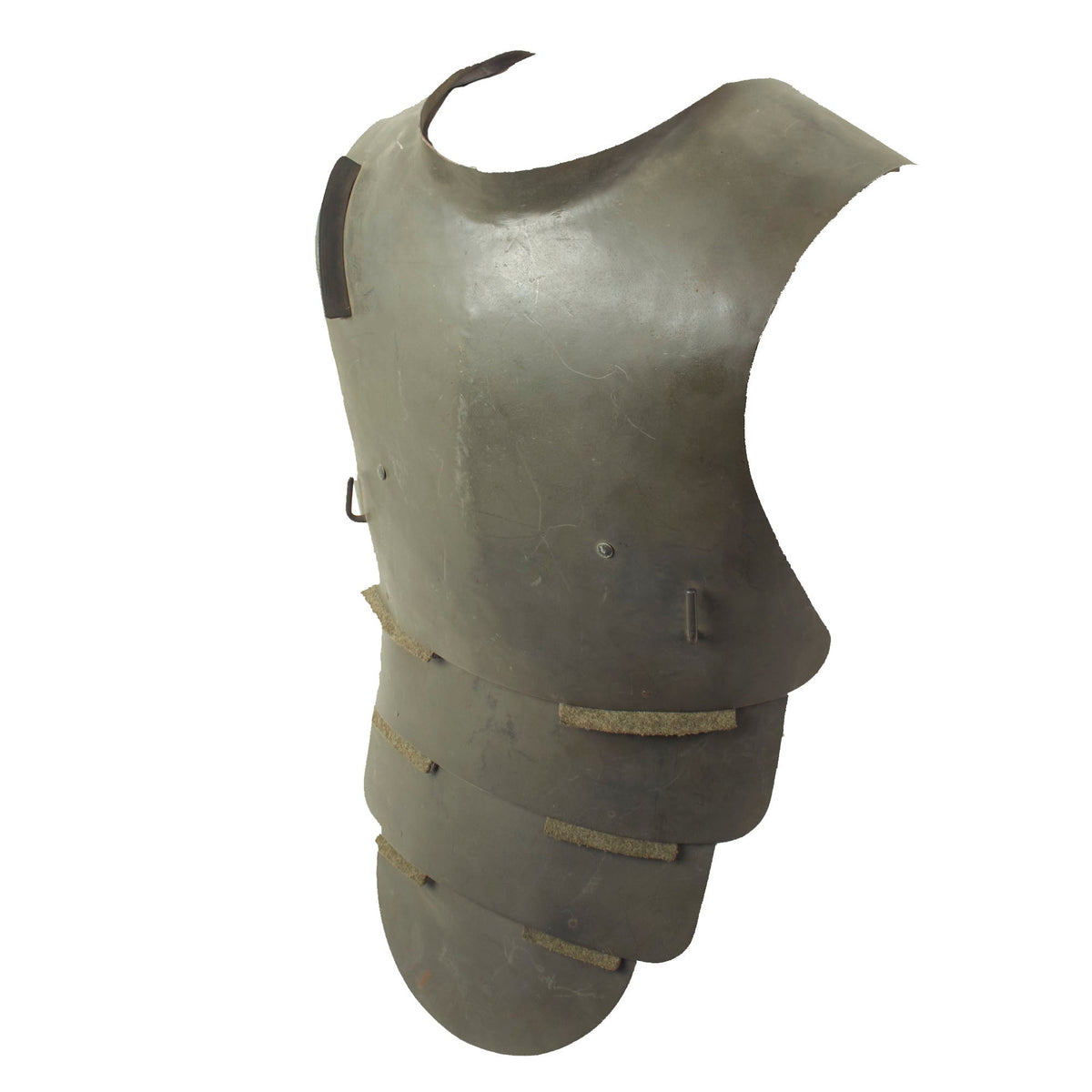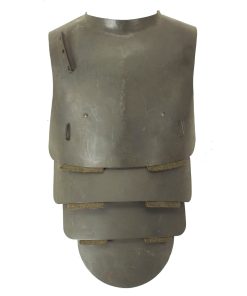High Quality Replica German WWI Sappenpanzer Trench Body Armor IMA
$ 395,00 $ 118,50
High Quality Replica: Only One Available. This is a high quality lightweight replica of the German WWI Sappenpanzer Trench Armor, deployed early in the war as protection for soldiers in the trenches. These are also sometimes called “machine gunner’s armor” as they were often seen being worn by the gunner of a machine gun squad. This replica is in great shape, showing some great wear that makes it look almost like the real thing!
This First World War period German Army armored breastplate of the type initially issued to front line troops in 1916. The complete equipment weighed between 20lbs and 24lbs (9kg and 11kg), reflecting the two variant sizes produced; 500,000 sets were issued to men on the Western Front. Capable of stopping low velocity fragments and shrapnel, the Sappenpanzer (trench armor) was, due to its weight, only practical for troops on sentry duty and machine gunners operating in static positions and was designed to be used together with the armored brow plate that hooked on to the steel helmet.
Modern body Armor
Body armor made a brief reappearance in the American Civil War with mixed success. During World War I, both sides experimented with shrapnel armor, and some soldiers used their own dedicated ballistic armor such as the American Brewster Body Shield, although none were widely produced. The heavy cavalry armor (known as cuirass) of Napoleonic France, as well as the German, British and Second French empires were also actively used throughout the 19th century, right up to the first year of World War I, when French cuirassiers went to meet the enemy in armor outside of Paris. The cuirass represents the final stage of the tradition of plate armor descended from the late medieval period. Meanwhile, makeshift steel armor against shrapnel and early forms of ballistic vests began to be developed from the mid-19th century to the present day.
Plate armor was also famously used in Australia by the Kelly Gang, a group of four bushrangers led by Edward “Ned” Kelly, who had constructed four suits of improvised armor from plow moldboards and whose crime spree culminated with a violent shootout with police at the town of Glenrowan in 1880. The armor was reasonably effective against bullets and made Kelly seem almost invincible to the policemen, who likened him to an evil spirit or Bunyip with one constable reporting that
“[I] fired at him point blank and hit him straight in the body. But there is no use firing at Ned Kelly; he can’t be hurt”
However it left sections of the groin and limbs exposed; during the infamous “Glenrowan Affair”, gang member Joe Byrne was killed by a bullet to the groin, Kelly was captured after a fifteen-minute last stand against police (having sustained a total of 28 bullet wounds over his body), and the remaining two members are thought to have committed suicide shortly after. Although the recovered suits were almost immediately mismatched, they have since been reorganized and restored and today remain as a powerful symbol of the Australian outback.
In 1916, General Adrian of the French army provided an abdominal shield which was light in weight (approx. one kilogram) and easy to wear. A number of British officers recognised that many casualties could be avoided if effective armor were available.
The first usage of the term “flak jacket” refers to the armor originally developed by the Wilkinson Sword company during World War II to help protect Royal Air Force (RAF) air personnel from flying debris and shrapnel. The Red Army also made use of ballistic steel body armor, typically chest plates, for combat engineers and assault infantry.
After World War II, steel plates were soon replaced by vests made from synthetic fiber, in the 1950s, made of either boron carbide, silicon carbide, or aluminum oxide. They were issued to the crew of low-flying aircraft, such as the UH-1 and UC-123, during the Vietnam War.
The synthetic fiber Kevlar was introduced in 1971, and most ballistic vests since the 1970s are based on kevlar, optionally with the addition of trauma plates to reduce the risk of blunt trauma injury. Such plates may be made of ceramic, metal (steel or titanium) or synthetic materials.
Prompt Shipping and Professional Packaging
We provide a variety of shipping options due to our long-running partnerships with UPS, FedEx and DHL. Our warehouse personnel are well trained and will pack the goods according to our exact and precise specifications. Before shipping your items will be thoroughly inspected and secured. Every day, we deliver to thousands of customers in different countries. This is a sign of our determination to become the largest online retailer worldwide. Both Europe as well as the USA have warehouses and distribution centers.
Note that orders containing more than one item will be subject to a processing period that is based to the particular item.
Prior to shipping the items, our staff will carry out an exhaustive inspection of the products you ordered. Today, most orders will be delivered within 48 hours. The estimated delivery time is between 3-7 days.
Returns
The stock is constantly changing. It's not entirely managed by us since we are involved with multiple entities, including the factory and our storage. Therefore, the actual inventory could alter at any time. It is possible that you will not receive your order after the order has been made.
The period of time is 30 days. Unfortunately, if 30 days have passed since you purchased your product, we are unable to provide a refund or exchange.
The item must not be in use and must be in the original packaging. The item must be in the original packaging.
Related products
Uncategorized
Uncategorized
Uncategorized
Uncategorized
Uncategorized
Uncategorized
Uncategorized
Uncategorized
Uncategorized
Uncategorized
Uncategorized
Uncategorized
Uncategorized
Uncategorized
Uncategorized
Uncategorized
Uncategorized
